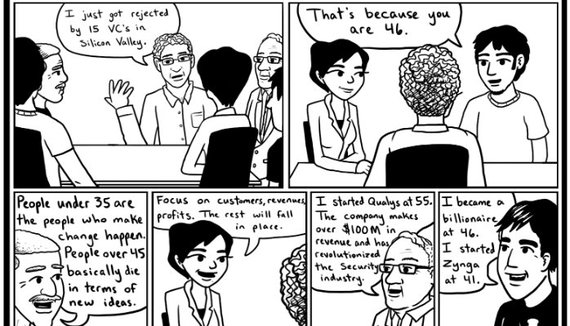Following the news on Intel's layoffs, I read some depressing projections for the rest of the technology industry. Dawn Kawamoto reports in Information Week that 260,000 tech workers will lose their jobs in 2016.
Below are the numbers Dawn has gathered from one Wall Street Analyst's predictions:
VMware
Estimated percentage of jobs to be cut this year: 10% to 15%
Estimated number of cut employees: 1,700 to 2,500
Symantec
Estimated percentage of jobs to be cut this year: 15%
Estimated number of cut employees: 2,800
Yahoo
Estimated percentage of jobs to be cut this year: 30%
Estimated number of cut employees: 3,500
EMC
Estimated percentage of jobs to be cut this year: 15% to 20%
Estimated number of cut employees: 10,000 to 14,000
Cisco Systems
Estimated percentage of jobs to be cut this year: 20%
Estimated number of cut employees: 14,000
HP Inc.
Estimated percentage of jobs to be cut this year: 30%
Estimated number of cut employees: 14,000
Microsoft
Estimated percentage of jobs to be cut this year: 15%
Estimated number of cut employees: 18,000
Oracle
Estimated percentage of jobs to be cut this year: 20%
Estimated number of cut employees: 26,000
Hewlett Packard Enterprise (HPE)
Estimated percentage of jobs to be cut this year: 30%
Estimated number of cut employees: 72,000
IBM
Estimated Percentage Of Jobs To Be Cut This Year: 25%
Estimated Number of Cut Employees: 95,000
As I said earlier, cuts tend to skew heavily towards older workers.
So the question that looms over these layoffs is what is going to happen to these highly skilled, intellectually capable professionals?
A percentage of them will likely find employment in other technology companies. But the numbers are really high, and the industry is probably not going to be able to absorb the entire set.
Instead of feeling depressed about the whole thing, I would like to look at the positive side of this phenomenon.
These are tech savvy people, many have worked for years and developed experience and savings, and can, at least a percentage of them can, start new ventures. They don't all have to build billion dollar companies. But they can focus on a $5M, $10M, $20M idea and build a $1M, $2M, $5M, $10M company over the next phase of their career.
Let us say, 1% of the 260,000 people above has the internal drive to build a new business, that would mean 2,600 new ventures. Let's say, each new business employs an average of 10 people. That would be employment for 26,000 people.
If a higher percentage starts companies, there would be a proportionately higher employment generation as well.
Of course, not all businesses would survive. But, with proper mentoring, Infant Entrepreneur Mortality statistics can be controlled. We will definitely do our part to help first-time entrepreneurs navigate this traumatic transition. If you like, please come to our free online roundtables and simmer in a supportive environment and community of fellow entrepreneurs. You can learn. You can network and develop connections. If you want to get ahead while you still have your paycheck or severance payment, read Bootstrapping With a Paycheck. And if you really have decided to move in the entrepreneurship gear, study this curriculum and learn the methodology of how to succeed.
Whatever you do, do not discouraged. Today's Internet is chock full of learning materials. Yes, you will have to rapidly upgrade your skills on multiple dimensions. However, there are numerous tools to do so. Whether it is learning a new programming language, acquiring entrepreneurship methodology knowledge, or learning how to become a data scientist, the options are plentiful, and the learning mechanisms are also plentiful.
I want to end with a wonderful case study of an entrepreneur whose story I covered back in 2009 as the subprime crisis created havoc with our economy. Michelle Munson lost her job, but instead of getting despondent, she founded Aspera, which she eventually sold to IBM. You can read her story From Laid-off Engineer to Successful Startup CEO: Michelle Munson, CEO of Aspera. I have always loved Michelle's story, and look forward to covering many other such inspiring stories that will rise on the ashes of adversity.

